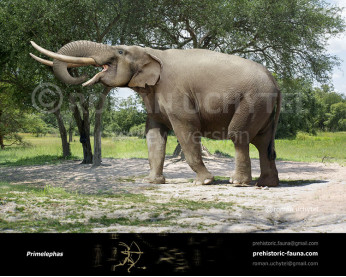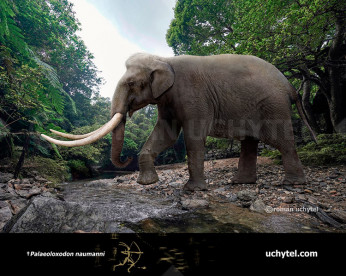Palaeoloxodon recki
430430Palaeoloxodon recki (†Palaeoloxodon recki (Dietrich, 1894))
Order: Proboscidea
Family: Elephantidae
Dimensions: length - 6 m (with tusks), height - 4,3 m, weight - 12300 kg
Temporal range: during the Pliocene - Pleistocene epoch (Africa and Arabia, 3.5 million - 130 000 years ago)
Palaeoloxodon recki is an extinct species related to the Asian elephant Elephas maximus. At up to 4.27 metres in shoulder height, it was one of the largest elephant species to have ever lived. It is believed that P. recki ranged throughout Africa between 3.5 and 1 million years ago. The Asian Elephant is the closest living relative of P. recki. P. recki was a successful grass-eating elephant that lived throughout the Pliocene and the Pleistocene until it was pushed to extinction, perhaps by competition with members of the genus Loxodonta, the African elephants of today.
A male of P. recki from Koobi Fora was 40 years old when it died. At that age it was 4.27 metres tall and weighed 12.3 tonnes . The species is known from the Middle Atlas of Morocco
Palaeoloxodon recki (†Palaeoloxodon recki (Dietrich, 1894))
Order: Proboscidea
Family: Elephantidae
Dimensions: length - 6 m (with tusks), height - 4,3 m, weight - 12300 kg
Temporal range: during the Pliocene - Pleistocene epoch (Africa and Arabia, 3.5 million - 130 000 years ago)
Palaeoloxodon recki is an extinct species related to the Asian elephant Elephas maximus. At up to 4.27 metres in shoulder height, it was one of the largest elephant species to have ever lived. It is believed that P. recki ranged throughout Africa between 3.5 and 1 million years ago. The Asian Elephant is the closest living relative of P. recki. P. recki was a successful grass-eating elephant that lived throughout the Pliocene and the Pleistocene until it was pushed to extinction, perhaps by competition with members of the genus Loxodonta, the African elephants of today.
A male of P. recki from Koobi Fora was 40 years old when it died. At that age it was 4.27 metres tall and weighed 12.3 tonnes . The species is known from the Middle Atlas of Morocco

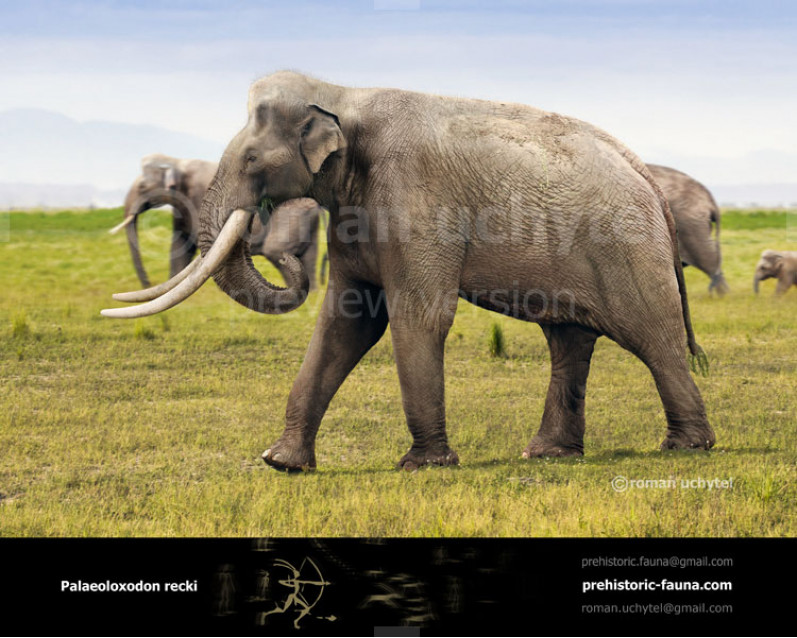
-2-797x638.jpg)
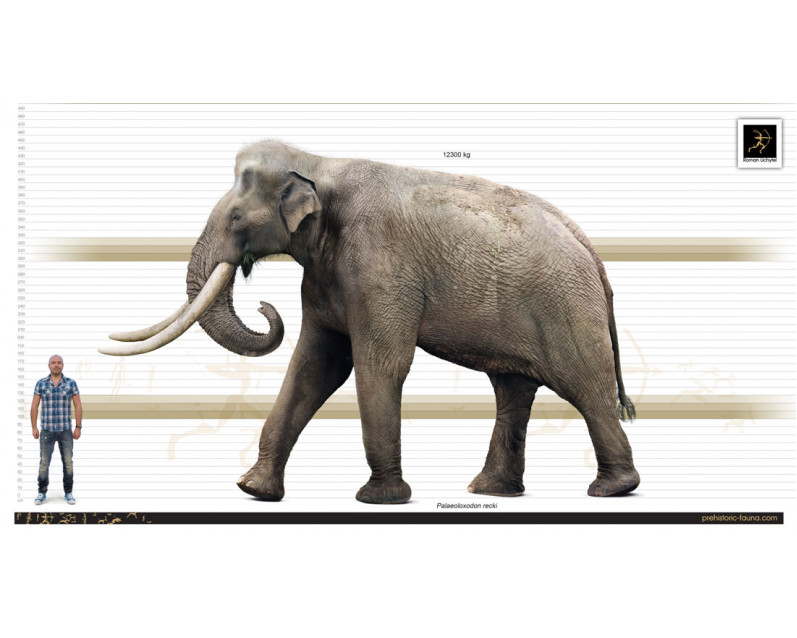

-2-70x56.jpg)

-346x277.jpg)
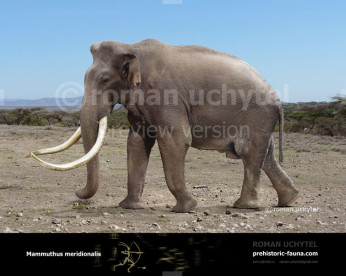
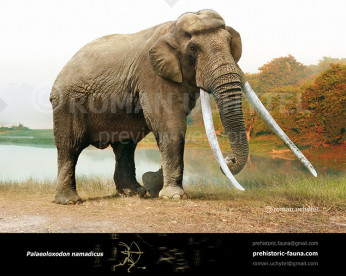
-346x277.jpg)
-cypriotes-346x277.jpg)
